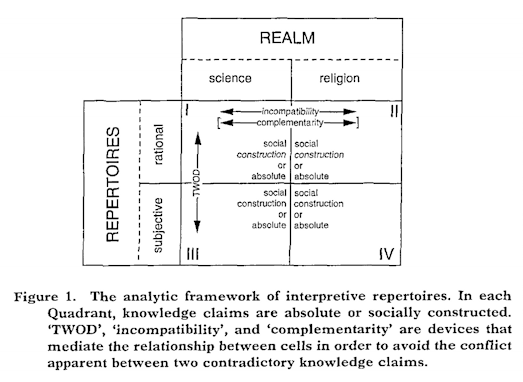
INTERPRETIVE REPERTOIRES A concept developed to aid the discourse analysis of talk and texts and most commonly used by social psychologists and other discourse researchers to summarize relatively global patterns in people’s sense making particularly around controversial issues and matters of public opinion. Interpretive repertoires operate at a broad semantically based level. They are recognizable routines of connected arguments, explanations, evaluations and descriptions which often depend on familiar anecdotes, illustrations, tropes or clichés. Interpretive repertoires are the building blocks through which people develop accounts and versions of significant events in social interaction and through which they perform identities and social life. The term ‘interpretive repertoires’ was first developed in 1985 by two sociologists of science, Nigel Gilbert and Michael Mulkay, to describe patterns in the discourse of the scientists they were studying. (Margaret Wetherell)
also: Interpretative Repertoires, Pamela J. MacKenzie (pdf)
Back in high school, on a weekend night, a friend and I were cruising for burgers. I was seated in the passenger seat of his mom’s Buick. Much to my shock but not surprise, he blew through a four-way Stop sign. I looked at sharply.
He reports, “Hoon, I saw the Stop Sign.”
TWOD=Truth Willing Out Device
